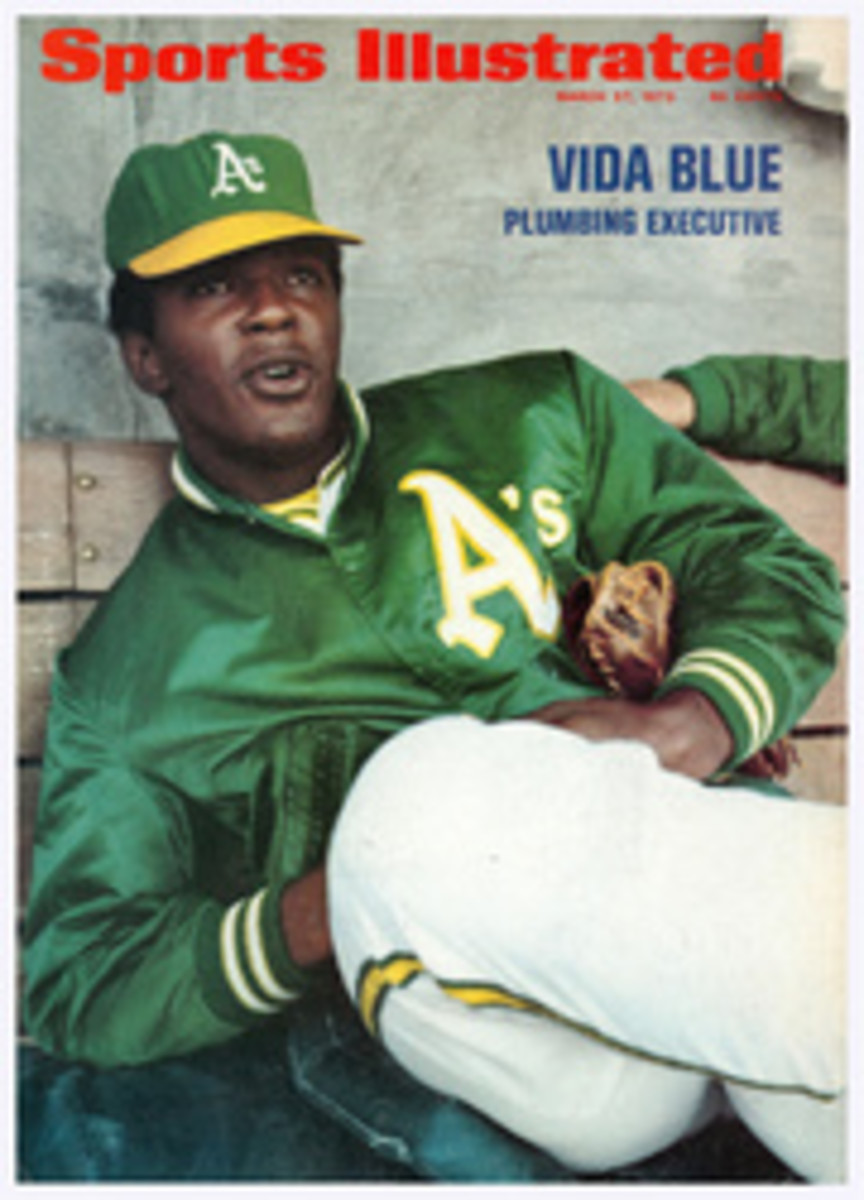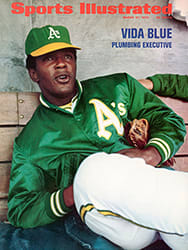
ESCAPE TO THE DESERT
The call of the wild has many voices, and among the strangest is the mixture of automobile noise and desert desolation that has produced a breed of off-road racing men. From time to time these individuals escape the urban clutter and find a kind of lunar freedom on the moonscapes of the arid West. But to be free first they must be bound. Cocooned within roll cages in their bizarre desert buggies in a web of safety harness—eyes goggled, mouths well masked against the suffocating dust—they are tied to these vehicles more straitly than to any desk or workbench. Yet once bound they are indeed free—to swoop and soar and slide, take risks, break bones, thumb their noses at the drones back in the hives. On the following pages are some of the men and machines of the Mint 400, an off-road rip out in the tawny reaches behind Las Vegas, with an assessment of the state of the sport, 1972.
'IT'S REAL PEACEFUL OUT THERE'
From those wonderful folks who brought you surfing, drag racing, the Hollywood Freeway and the backyard barbecue comes the latest in dynamic outdoor entertainment: off-road racing. Over the past decade, with Southern California as its epicenter, the sport has boomed across the dunes and dry gulches of the Desert West. This year an estimated 4,000 off-road racers will be churning it up, ranging in skill from weekend desert rats to the likes of Indy winners Parnelli Jones and Al Unser. The best will compete for upwards of $750,000 in prize money. Jones is one of the most enthusiastic converts to the sport. "This is the life," P.J. sighed recently after a day of vaulting arroyos, skidding through washes and triphammering his kidneys. "It's real peaceful out there."
The genealogy of the sport is almost as obscure as some of the race locales—places like Searchlight, Nev. and Lone Pine, Calif. Some enthusiasts trace the first sand buggy back to the 1920s, when speed-freaky Californians rigged their Model T Fords with caterpillar-type belts for better traction in the outback. In the 1930s Model A Fords were similarly modified—largely for profit. "A speedy sand wagon could make the booze run from Mexico faster than a boat," recalls one nostalgic oldtimer, "and if the rumrunner ran out of gas, he could tank up with the cargo. That was high-octane hooch."
The glut of surplus jeeps that hit the market after World War II further broadened the base of the sport, but it took a foreign import to accelerate off-road racing to its present ubiquity. In the early 1960s a boatbuilder named Bruce Meyers from Newport Beach, Calif. fitted a customized Fiberglas body to the shortened hulk of a wrecked Volkswagen and the "dune buggy" as we now know it was born. The Meyers Manx is still top cat in the constantly expanding market. Hyped by the prestigious endorsement of such speed buffs as Actors Steve McQueen and James Garner, the demand for VWs and Porsches in the Southern California area reached criminal proportions. A "steal to order" ring of car thieves hot-wired thousands of bugs which were converted into unrecognizable sand wagons—only the frame, engine and drive train of the originals remained after surgery.
Now supply has caught up with demand, and off-road racing is on the verge of becoming a big-league sport. "Today there are about six or seven major off-road races of quality," says Mickey Thompson, who rode the crest of the drag-racing wave from its outlaw days to its present respectability and sees a similar future for desert racing. "By next year we'll have about 15 major off-road events."
One of the biggest is the Mint 400, a spine-shattering romp through the wasteland surrounding Las Vegas. When it began four years ago on an experimental basis, the Mint was minimal: its purse totaled $15,000. This year's event offered $56,000 in prize money. By comparison with Indianapolis, stock-car racing or the Grand Prix circuit, off-road racing is still a tight place to make a living, although a few independent drivers are able to carve out a bare existence in such races as the Mint, Arizona's Parker Dam 500, the Riverside Grand Prix, the Westward Ho 250 and the brace of races in Mexico that most desert drivers equate with Le Mans—the Baja 500 and the Baja 1,000.
As with most sports in their infancy, off-road racing is done more for love than money, though the pleasures are extravagantly laced with pain. In last year's Mint only 25 of the 264 starters finished the eight-lap race (each lap covers 50 up-and-down miles). Several drivers broke kneecaps on their roll cages during the rougher going, three vehicles fractured their axles less than 12 miles into the race, and one car suffered the humiliation of nine flat tires in four laps. Parnelli Jones, driving a Ford Bronco all-purpose truck with Al Unser as his copilot, hit dust so thick that a debate arose over whether or not the truck was moving. Fritz Kroyer, a Danish-born Canadian who won the race in a VW-powered Hi-Jumper, recalls splashing into an ostensibly dry gully. "When I hit the silt," he says, "it came over the front of my buggy like a solid wall of water." Kroyer's winning time of 13 hours 30 minutes 42 seconds converts to just under 30 mph.
The future lies with hard cases like Kroyer and the sport's only nascent superstar, one Drino Miller of Costa Mesa, Calif., considered by some to be the Wilbur Shaw of the wasteland. Miller, 30, who stands 6'5" and weighs nearly as much as a VW, is a figure to match the desert's duress: he has worked as a ski instructor at Aspen, crewed on a ketch in the South Pacific, dabbled in the chill waters of professional abalone diving. Though he dropped out of high school after the 10th grade, Miller returned to academe in pursuit of a political science doctorate at the University of Michigan. Most important, he has won both the Mint 400 and the Baja 1,000. "I grew up in love with cars," says Drino, "and when I found I could race professionally with my first buggy, I knew I had a profession."
Like most desert racers, Miller believes that the next year or two will see the sport more than double in both participation and prize money despite the problems it faces from ecologists. The National Off-Road Racing Association, which serves as sanctioning body and chief factotum for desert racing, works closely with the Bureau of Land Management. For the most part, its races are carefully laid out over existing rights-of-way such as dirt roads, dry washes and public utility service roads.
Miller remembers a Parker Dam race in which the course was changed to avoid the sanctuary of a rare type of frog. "Most of the routes we use were made years and years ago," he says. "As a rule we tear up very little new territory. On the other hand there are some flagrant misuses that must cease."
EIGHT PHOTOS
MILTON OLEAGA

